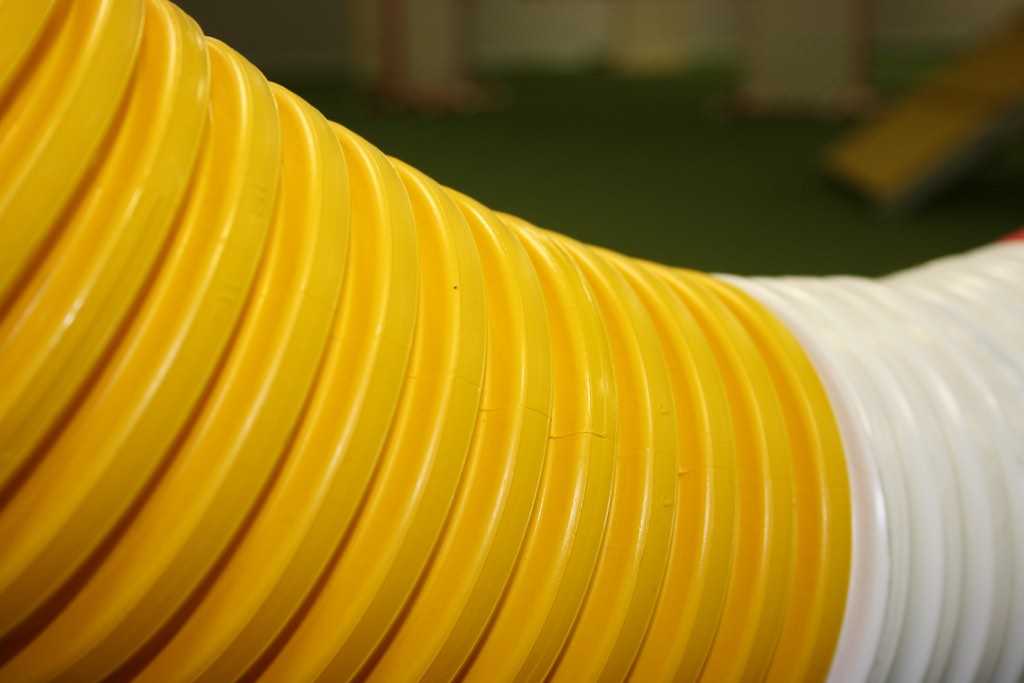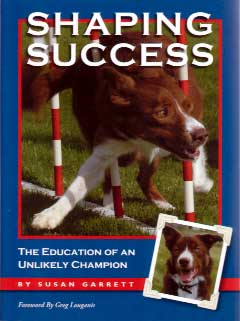Susan Garrett's Shaping Success
28 Mar 2006
The last couple weeks I’ve been reading Susan Garrett’s latest book Shaping Success. The Education of an Unlikely Champion. If you are at all interested in using Clicker Training to train dogs for agility this is an invaluable book. As the title suggests Susan describes the journey she embarks on to use Shaping (as opposed to Luring) to train her pup Buzz to compete at the highest agility levels.
Susan makes a compelling argument for shaping developing a thinking dog that offers behaviors in an effort to obtain a reward (toy, treat, tug, access, etc.). As a trainer I’m only a novice clicker trainer so making the jump to shaping will require more planning and thought on my part but I’m up for the challenge.
The book follows Susan’s training of Buzz as he grows physically and mentally and ultimately becomes a championship level agility dog. She presents and clearly explains drills along with the reasoning behind the behaviors she has chosen at each stage of Buzz’s development. It is the change in a trainer’s thinking required by shaping that Susan presents clearly. I found the many applied examples very helpful.
Just as important as the successes, Susan describes problems she encountered, their causes, and how she worked through them. These included barking, pulling on the way to the ring, among others. She shares her doubts, concerns, and frustrations and the challenges she faced both in training and among those who didn’t believe her “Buzzy” would ever successfully compete. It is easy to imagine the trainers/handlers at the top of the sport are all knowing, never doubt their methods, and are always successful. Susan gives us an unvarnished view of her journey.
While I don’t think she addressed this directly, this book isn’t only for trainers starting a new dog. Her approach can work for any dog that is still willing to work for their trainers. I would think the dog that is always expecting to be lured through their next behavior will take longer to understand offering behaviors is a good thing; but if appropriately and enthusiastically rewarded I’m sure it can be successful.
The only thing I would have liked to have seen added would have been a recommended skills progression diagram or table. While she does discuss and clearly describe specific drills throughout the book, there are a couple times where she describes how she would have changed her initial training approach. So it would be nice to see an ideal outline of which skills she would teach and in what order (with the understanding that all dogs are different and may not need exactly that progression).
I highly recommend this book. I know one clicker-savvy trainer who has been shaping her puppy’s behaviors (starting before this book was published). I’m amazed at the speed with which the dog has learned new behaviors and the enthusiasm the dog has for learning and playing. I think learning to shape is a skill that will challenge agility trainers in a new positive direction (pun intended). It will also improve relationships between dogs and their trainers and help develop dogs for which training is a new, fun way to play.
If you enjoyed this article won't you please:  Thanks!
Thanks!

